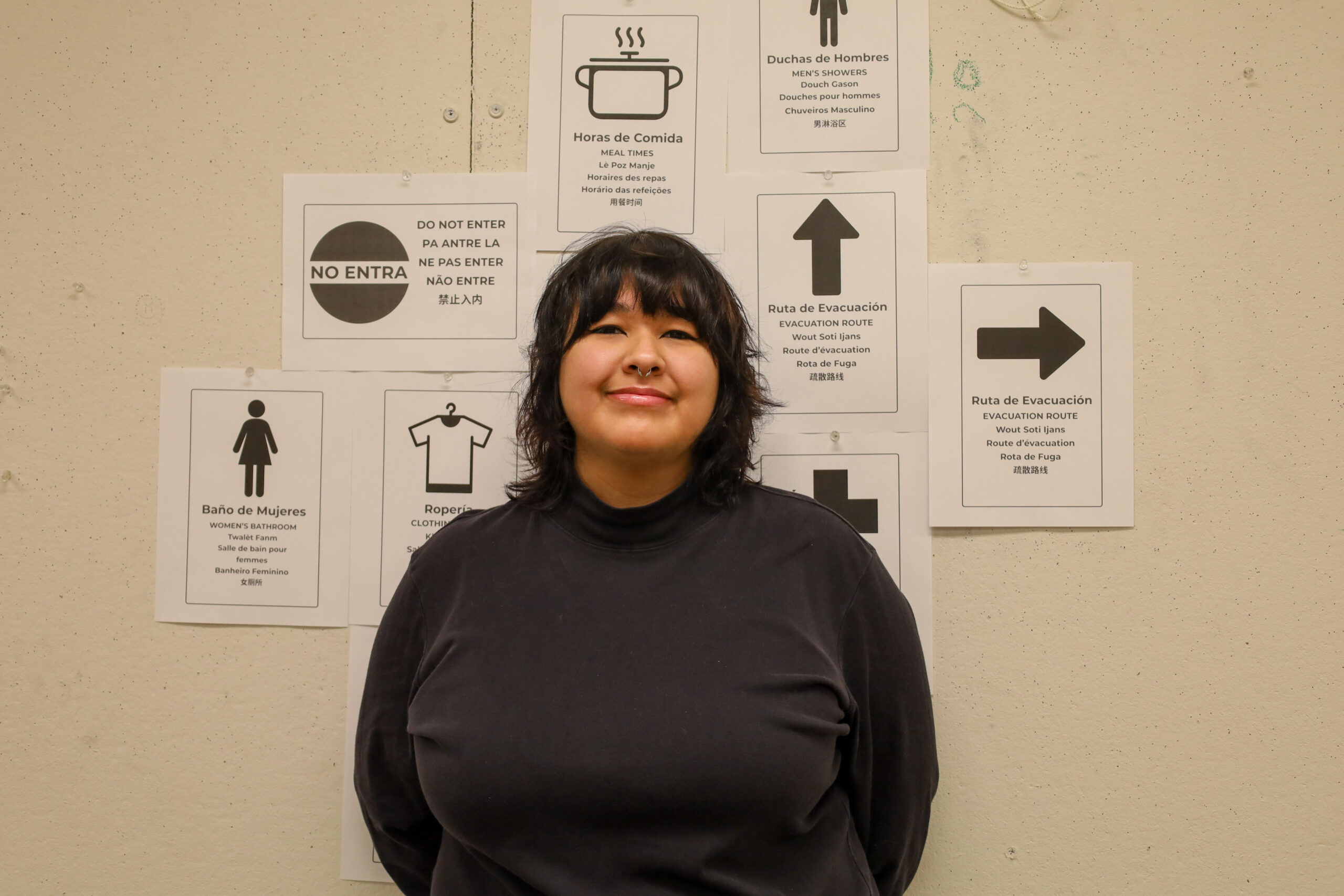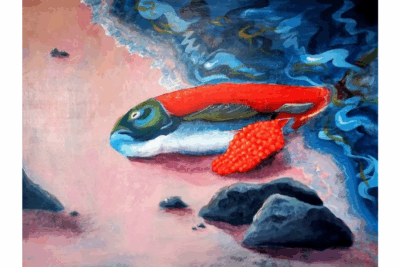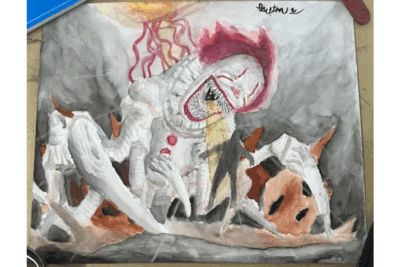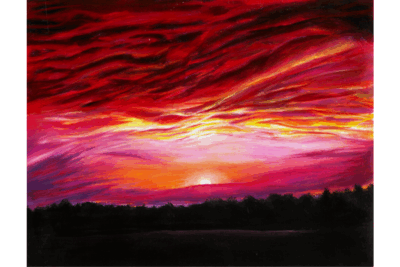It was mid-November when Sara Method, assistant professor of art, offered Aaliah Higareda, a sophomore graphic design major, an opportunity to develop her portfolio. This wasn’t your typical college resume-builder or an artsy side-project, but an opportunity to help on a larger scale.
The offer? To assist asylum seekers by creating wayfinding signage. The offer was unpaid and purely volunteer work, but Higareda was quick to accept.The assignment was originally sent over from Emily Miller, associate director of the asylum and border services on behalf of Church World Service, as they were in dire need of proper signage. CWS, a faith-based nonprofit, works with displaced individuals and helps with shelters run by local agencies. The shelters needed signs that could cater to the many languages and cultures passing through — but their graphic design team was busy with other projects, inspiring the search for a volunteer.
Method said that Higareda has been “actively involved with coordinating projects for the campus community. [She] dedicates her time and energy to all of her coursework, as well as taking on this volunteer project outside of class time, which is amazing.”
The signage is used to aid asylum seekers who are housed in places such as churches or warehouses that provide food, water, shelter or a phone call to loved ones, according to the CWS website. The asylum and border teams are based in El Paso, Texas; Harlingen, Texas; and San Diego, with asylum seekers staying anywhere from a few hours to a couple of days.
Miller said that she prefers the term ‘asylum seeker’ “because the majority of individuals crossing at the southern border are seeking protection. I could call myself a migrant because I have moved multiple times from one location to another for jobs. But in those situations, I had a high level of self-efficacy and I was not forced to move … there are nuances to each term.”
Miller also emphasized the importance in avoiding the term “border crisis,” because “what we’re seeing at the border is the result of a man-made crisis which is an immigration system that is broken,” she said. “It makes it seem like a crisis, like the end of the world is coming. Migration has happened for decades. Migration started in the Bible, right? Adam and Eve had to leave the Garden of Eden. … We have this rich history of immigration.”
For Higareda, the allure of building her portfolio intrigued her, but her own cultural connection encouraged creativity: “Well, at first I [thought] this was a good opportunity for me to get some volunteer work [and] I had wanted to do stuff like this,” Higareda said, “but also my dad had come from Mexico. … A lot of my family members have come from Mexico and migrated here.”
She follows this by citing her time in the “Inside Out” class, where she shared a class with people incarcerated in the Elkhart County jail as a source of inspiration and reflection: “Just learning about [their] trauma and resilience, [and] learning about what these people will go through to the journey to the U.S., it’s really scary to think about it,” Higareda said. “Having these signs is really important.”
Higareda and Miller would eventually meet up, working together to make the designs simple and universal, using graphics with few words and mostly icons.
Miller wouldn’t consider herself a “graphics person or a visual person,” she said. “So many of the questions [Higareda] asked were incredibly thoughtful. … Her sensitivity, her perseverance in doing this and just asking a lot of really good questions pushed me to think about how signs can be wayfinding.”
Although the plan was set, there were challenges that followed. Factors such as formatting, spacing, effectively using universally understood icons, and catering to cultural differences while promoting inclusivity proved to be a challenge. The goal was “to just make sure that the signage was not complex,” Higareda said, “because we are putting multiple languages on it and to make sure it still communicates what we wanted.”
The sign for “meal time” was one example of the complexities of intercultural communication at play.
“What icon represents meals?” Higareda said. “Are you going to think about a fork and a spoon? Some cultures don’t use forks and spoons; they use their hands.”
The “no toilet paper in the trash” sign proved to be the most challenging. According to Higareda, the sign required the use of an icon-only layout to avoid cramming six languages into one sign. In some cultures, it’s common practice to throw used toilet paper into the trash can since the sewer system can’t handle it. The layout went through different variations until Higareda, Method and Miller finally settled on what is now the final design.
As Higareda went along though, one thing was clear: This wasn’t just creating signs to guide and direct; it was about inclusion and familiarity for people far from home, seeking refuge and safety in an unfamiliar place.
She said that wayfinding is “something small that people wouldn’t really think about, [but] definitely something that will help so many families feel more comfortable and like they know where they’re at.”
Higareda created a total of 26 signs — 13 have five languages (Spanish, English, Haitian Creole, French and Portugese) while 13 also feature Mandarin. The final set comprises signs for bathrooms, showers, three “evacuation route” arrows, an infirmary, meal times, clothing room, Wi-Fi, “do not enter,” “exit” and “no toilet paper in the trash.”
The signs were also made for black-and-white print under a universal printer size, allowing shelters to print quickly and affordably.
Higareda finished in early March, and the signs are currently going through the next step: laminating and hanging them up. CWS’s asylum and border services are also finalizing a blog about Higareda’s work, and have a dedicated “signage” link under their “resources” tab with Higareda’s signs available to view and download.
Method said “she’s very self-motivated and driven and really generous to work with, too … a wonderful combination,” Method said. “It’s just really, really nice to be on the outside and kind of watch it develop as she took charge and did this project.”




